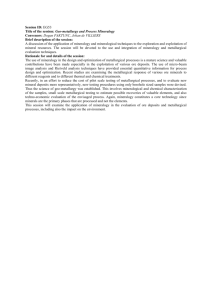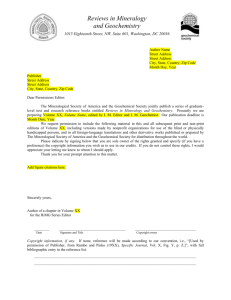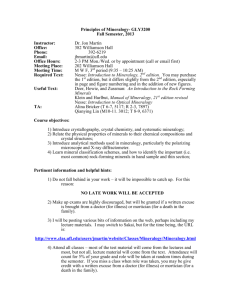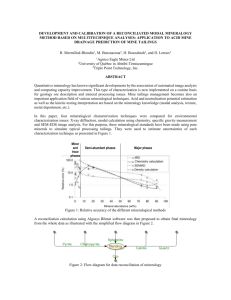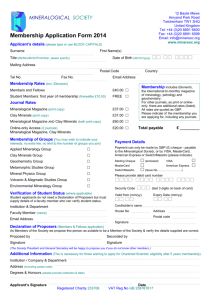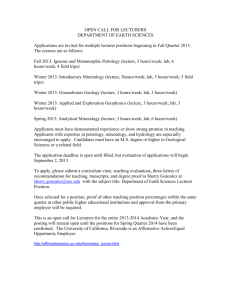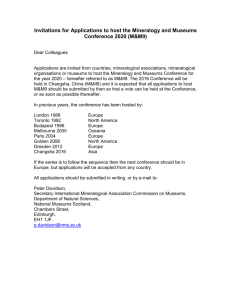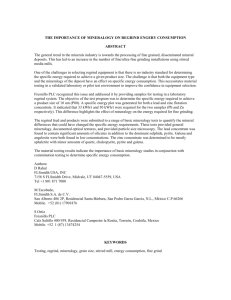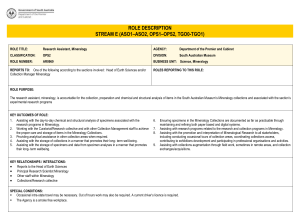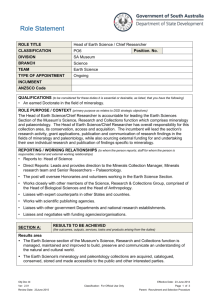Applications of automated quantitative Mineralogy in Geometallurgy
advertisement
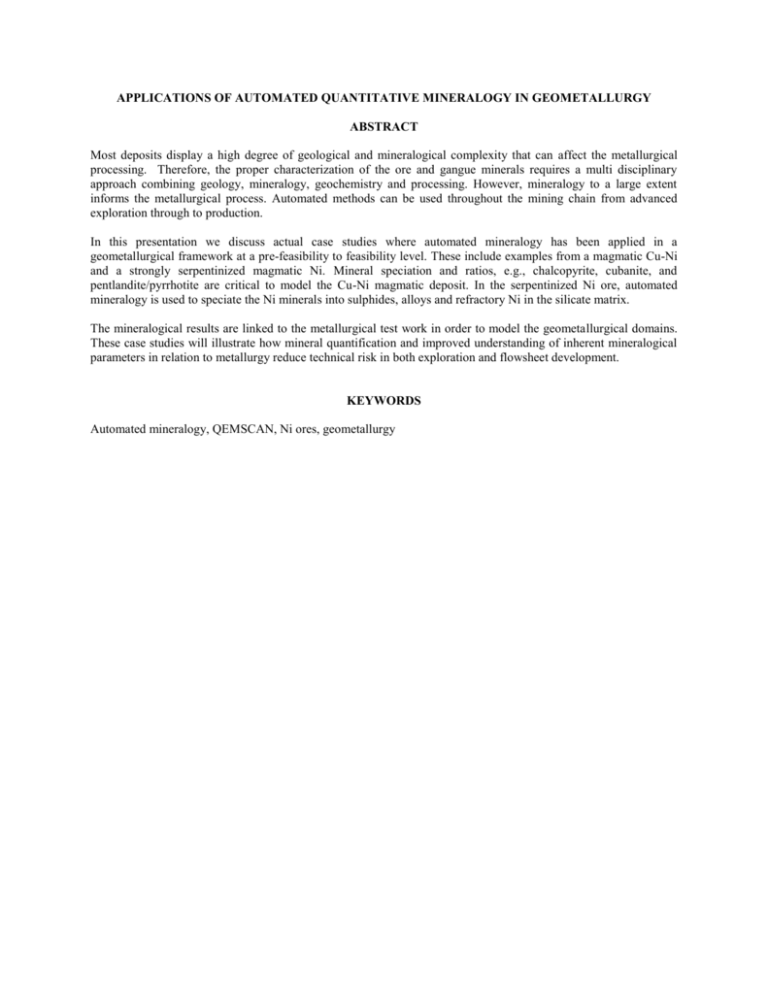
APPLICATIONS OF AUTOMATED QUANTITATIVE MINERALOGY IN GEOMETALLURGY ABSTRACT Most deposits display a high degree of geological and mineralogical complexity that can affect the metallurgical processing. Therefore, the proper characterization of the ore and gangue minerals requires a multi disciplinary approach combining geology, mineralogy, geochemistry and processing. However, mineralogy to a large extent informs the metallurgical process. Automated methods can be used throughout the mining chain from advanced exploration through to production. In this presentation we discuss actual case studies where automated mineralogy has been applied in a geometallurgical framework at a pre-feasibility to feasibility level. These include examples from a magmatic Cu-Ni and a strongly serpentinized magmatic Ni. Mineral speciation and ratios, e.g., chalcopyrite, cubanite, and pentlandite/pyrrhotite are critical to model the Cu-Ni magmatic deposit. In the serpentinized Ni ore, automated mineralogy is used to speciate the Ni minerals into sulphides, alloys and refractory Ni in the silicate matrix. The mineralogical results are linked to the metallurgical test work in order to model the geometallurgical domains. These case studies will illustrate how mineral quantification and improved understanding of inherent mineralogical parameters in relation to metallurgy reduce technical risk in both exploration and flowsheet development. KEYWORDS Automated mineralogy, QEMSCAN, Ni ores, geometallurgy
